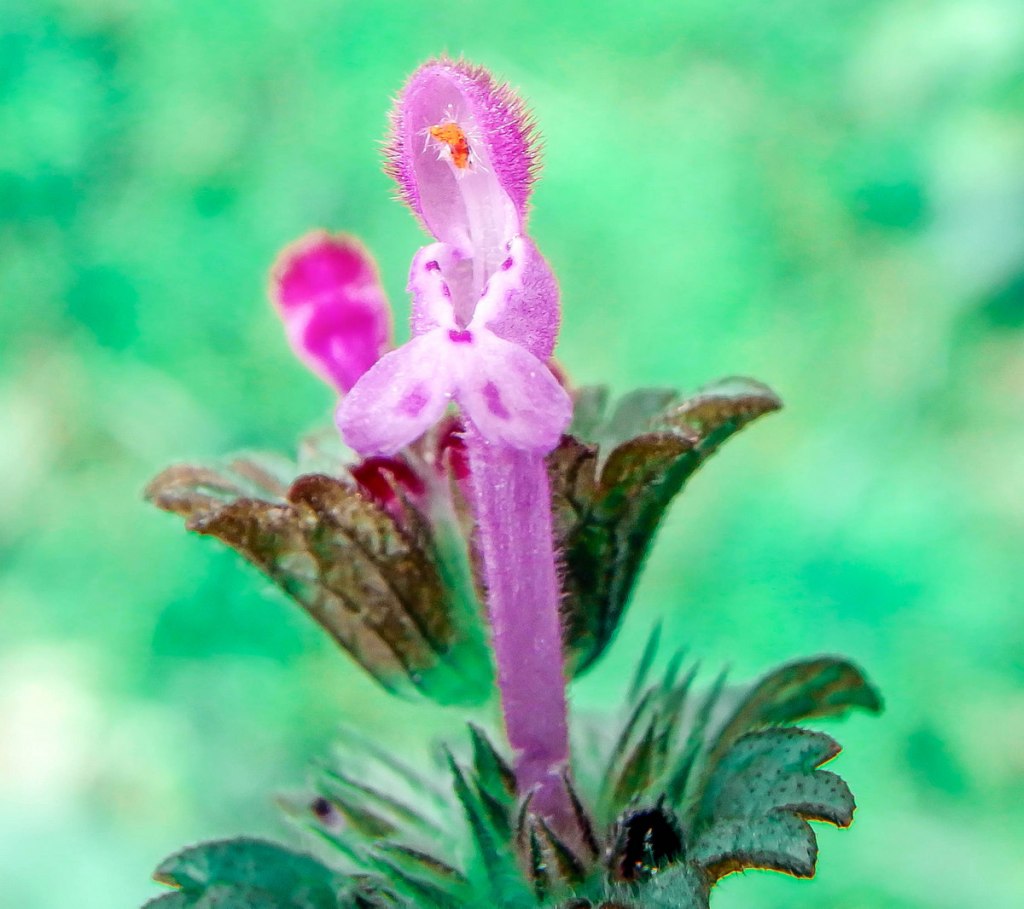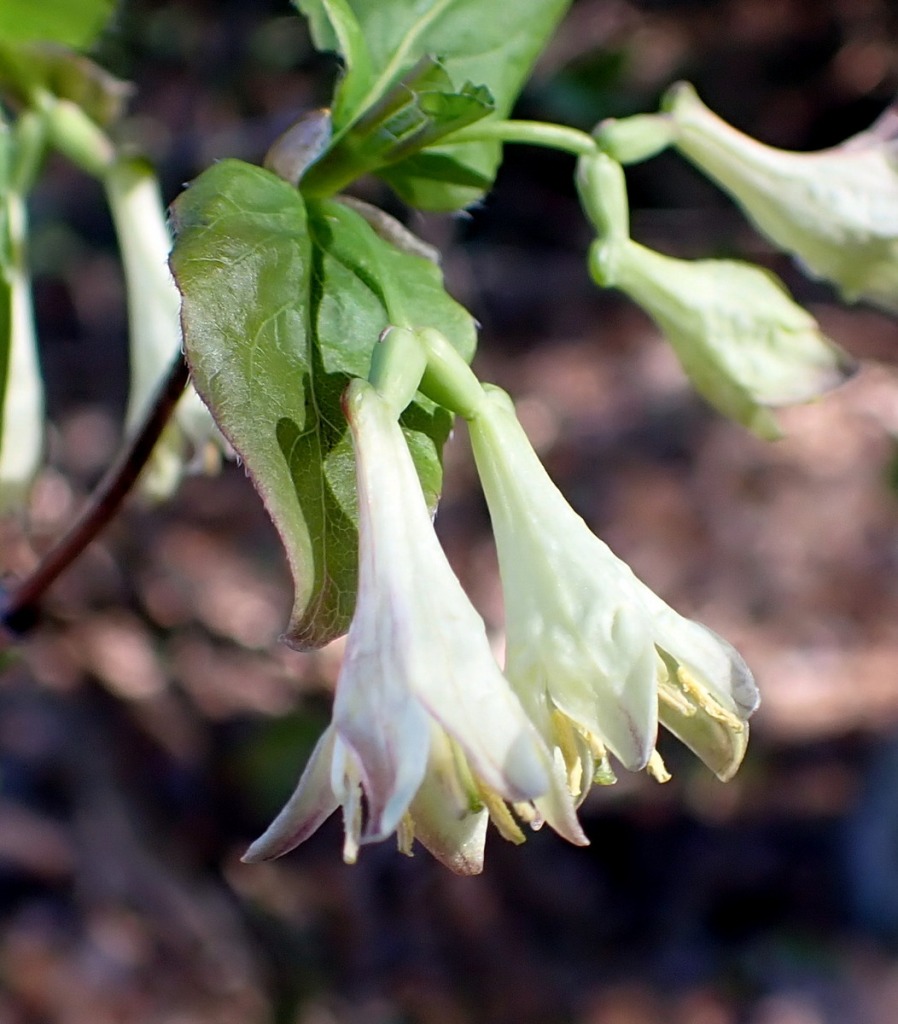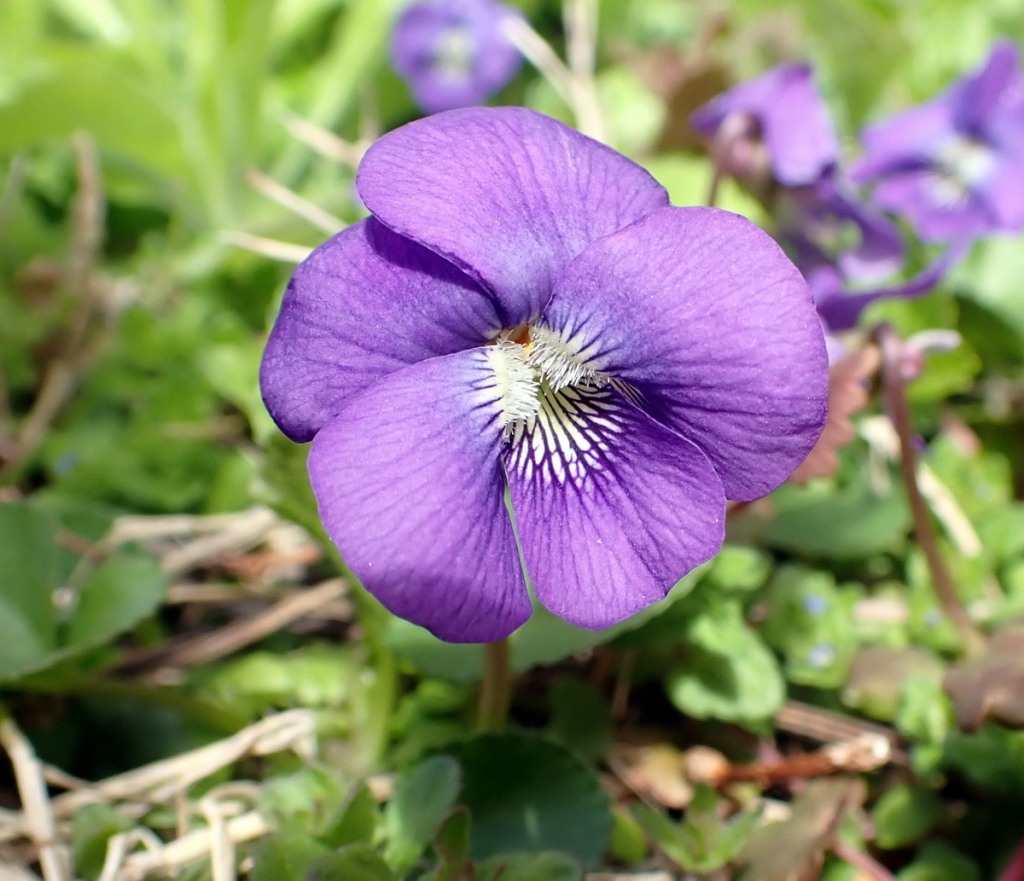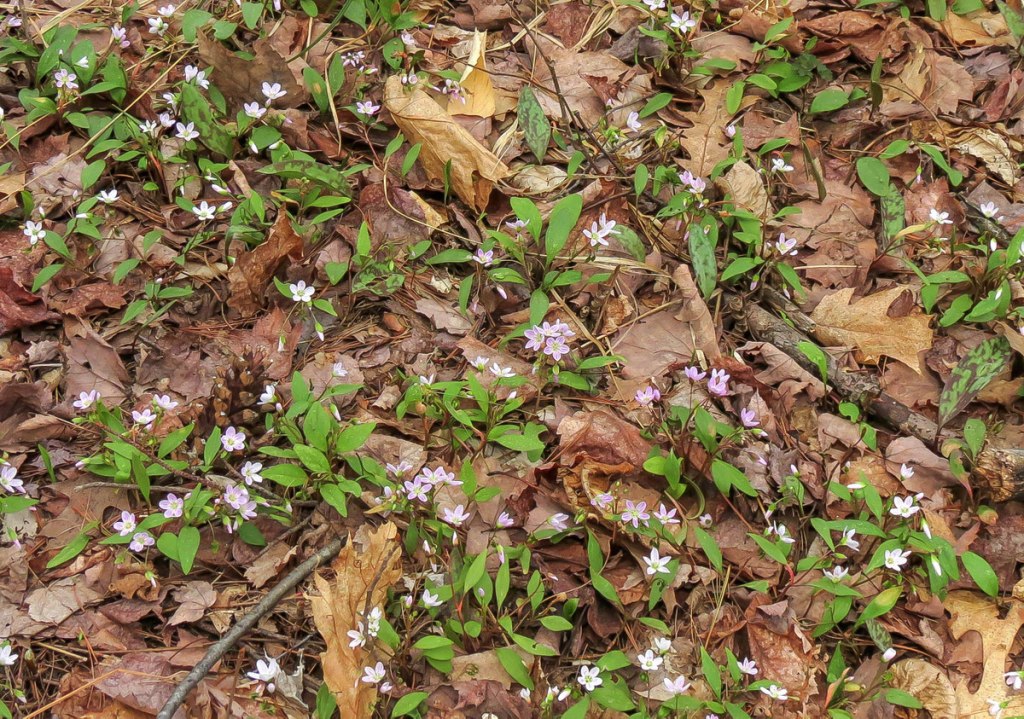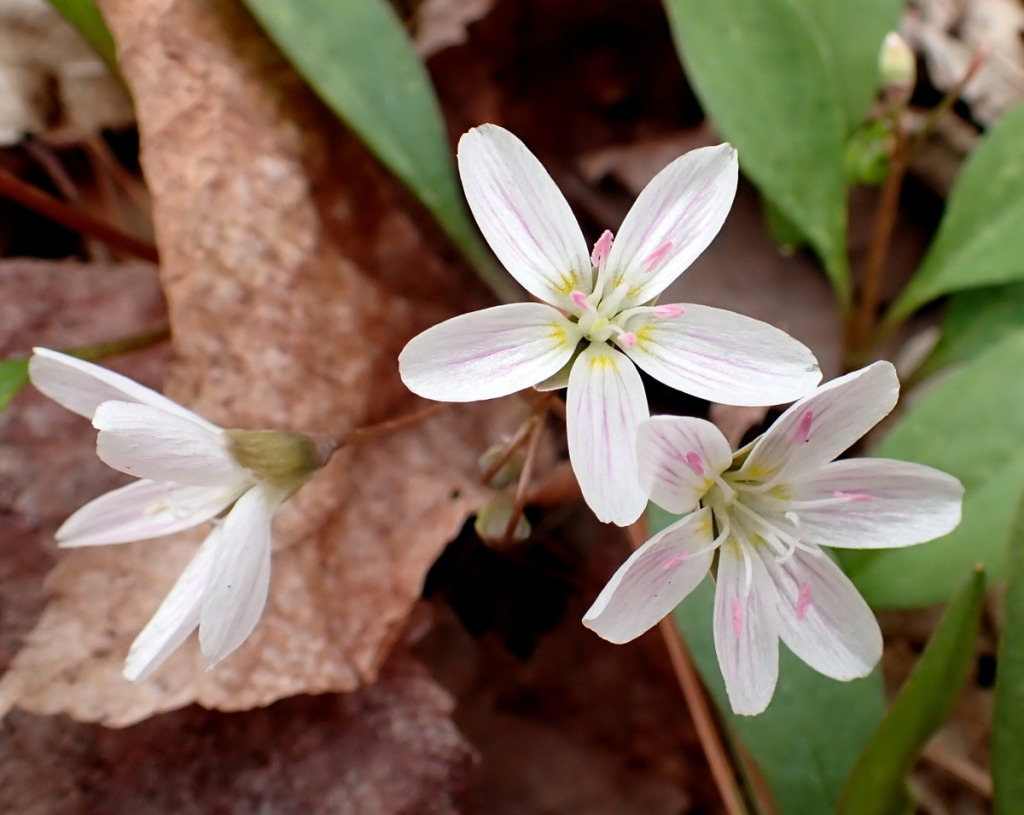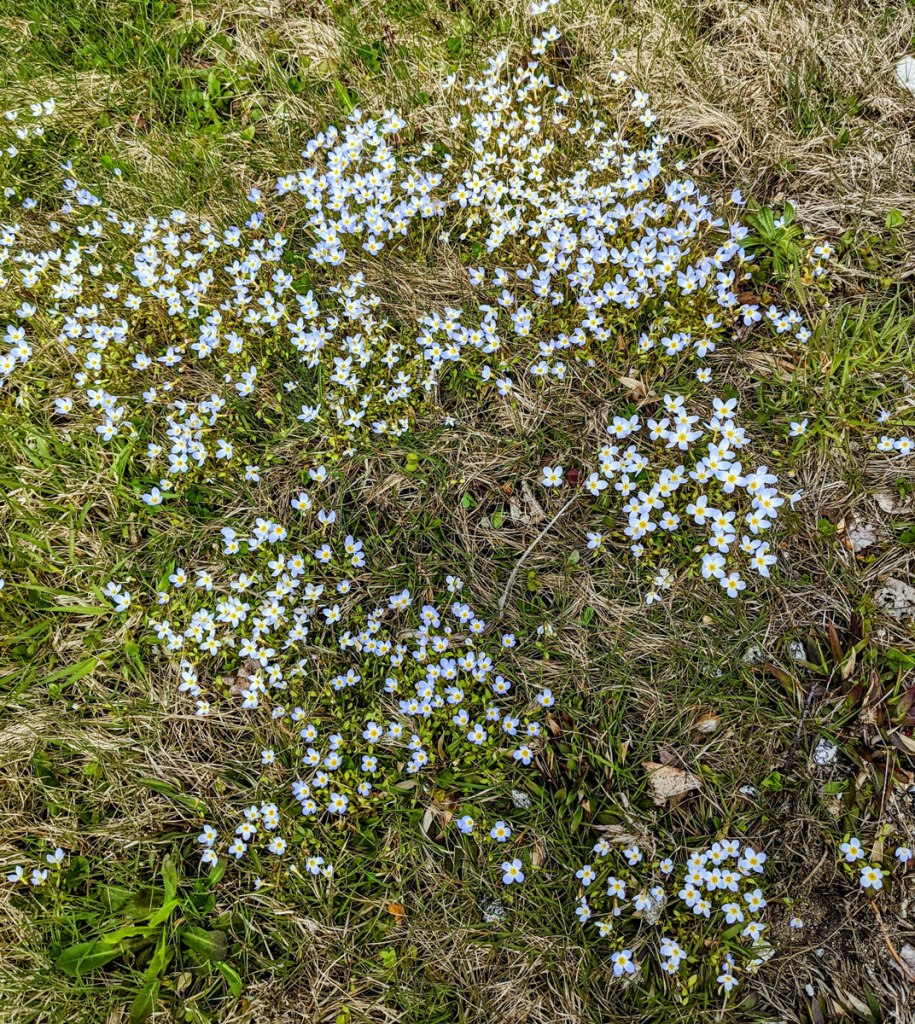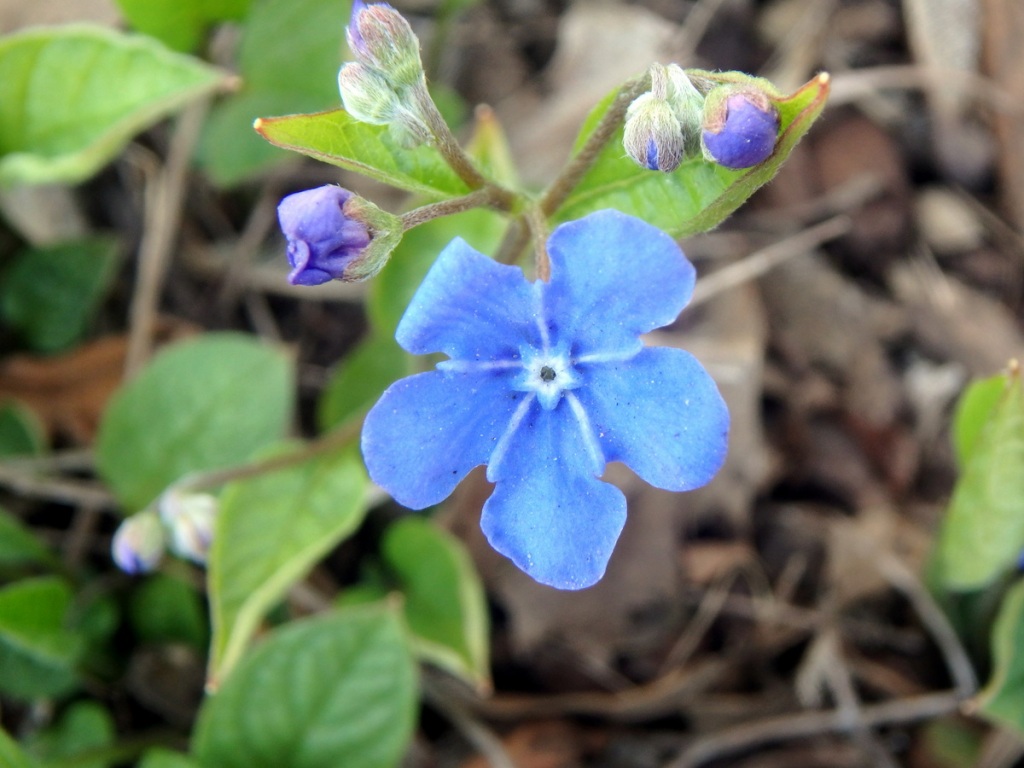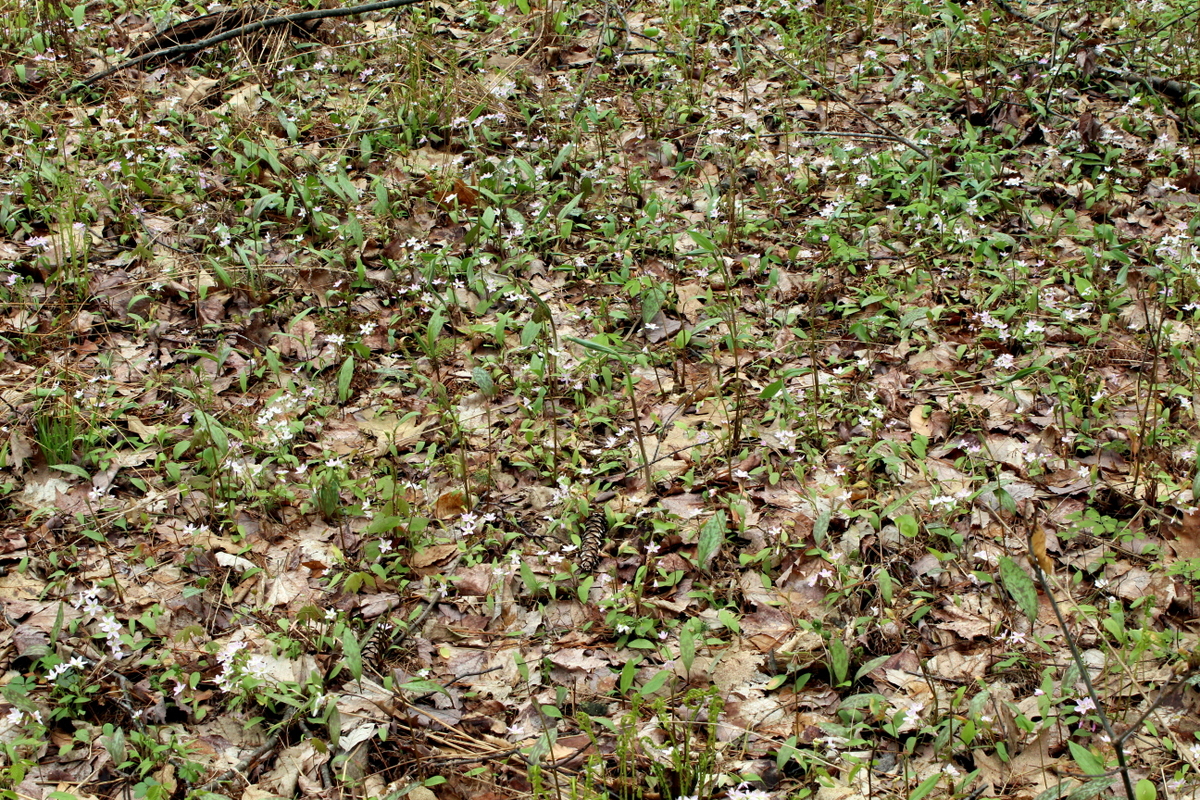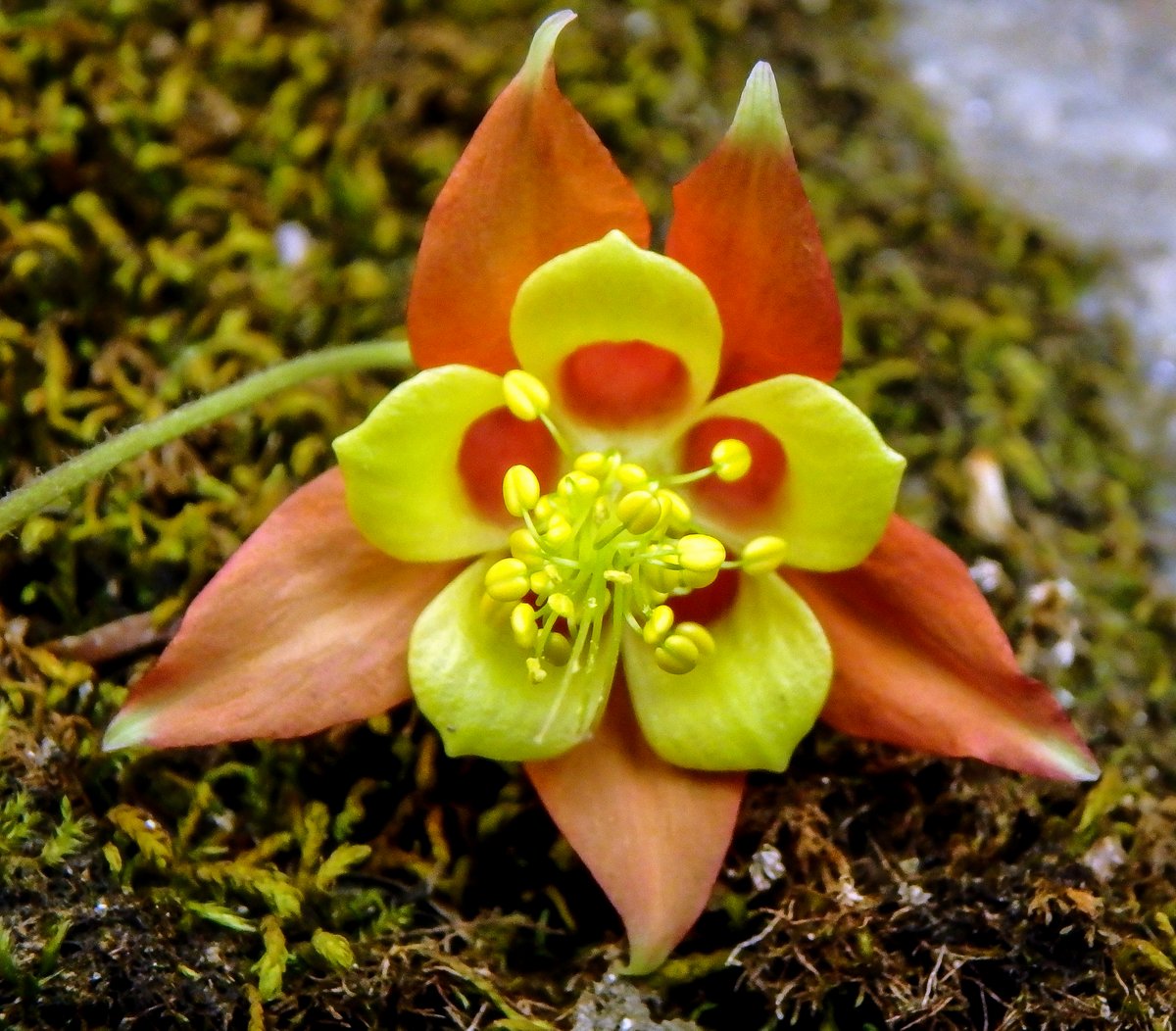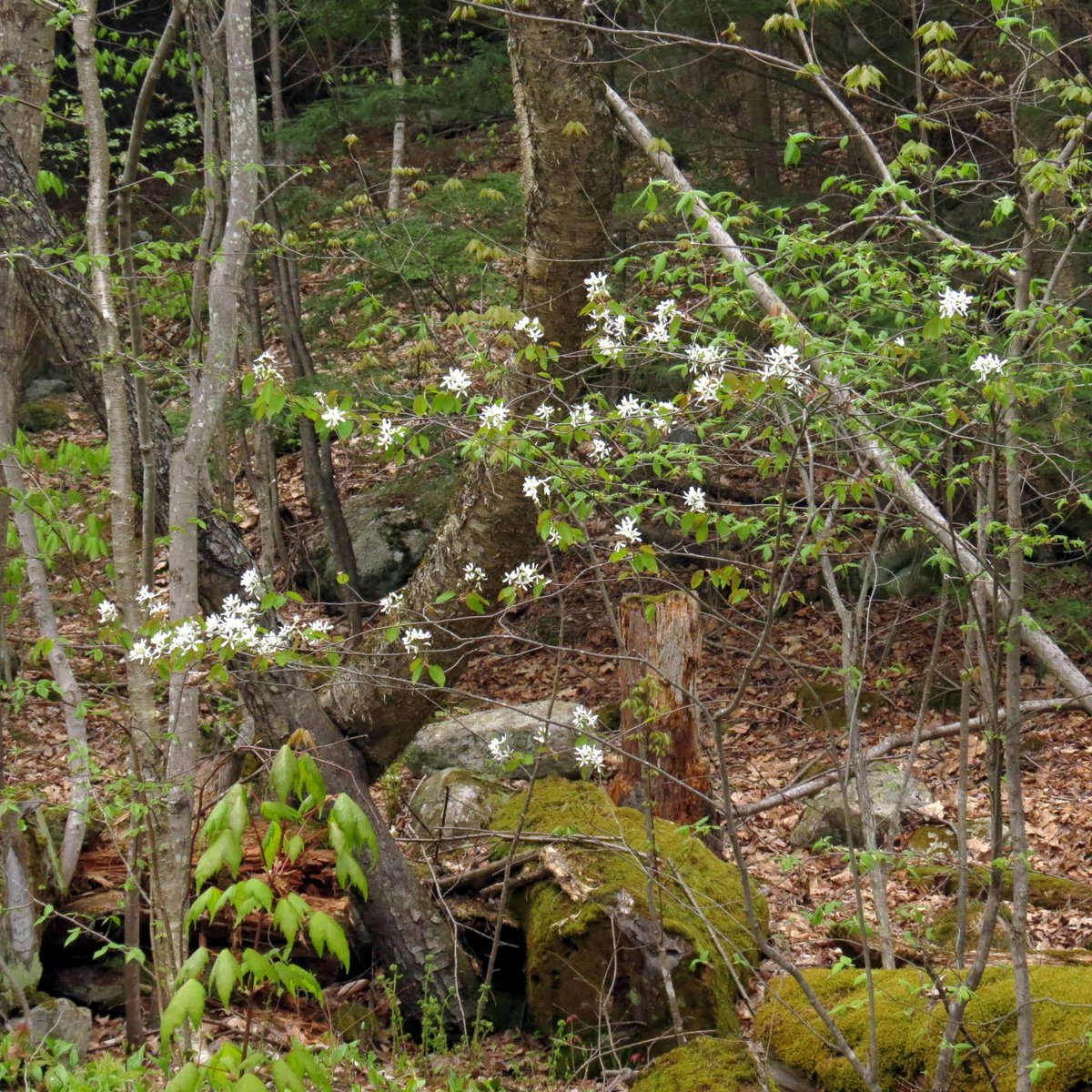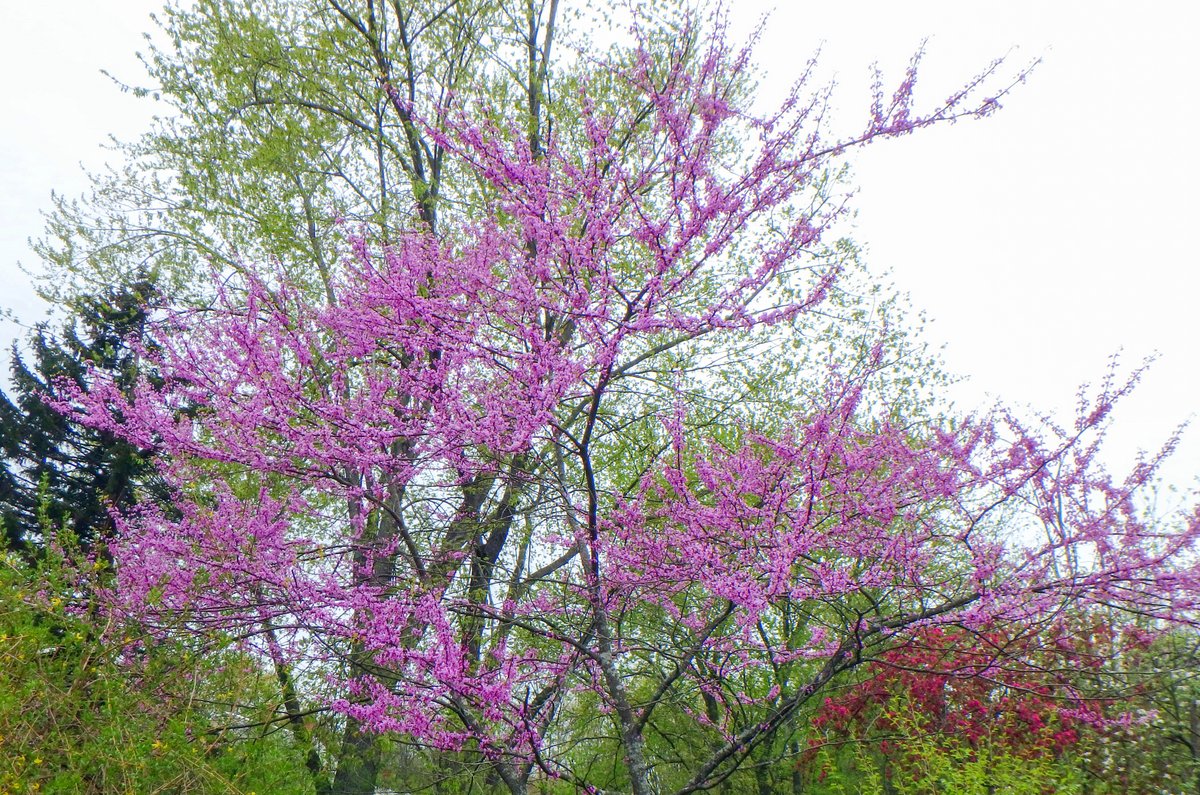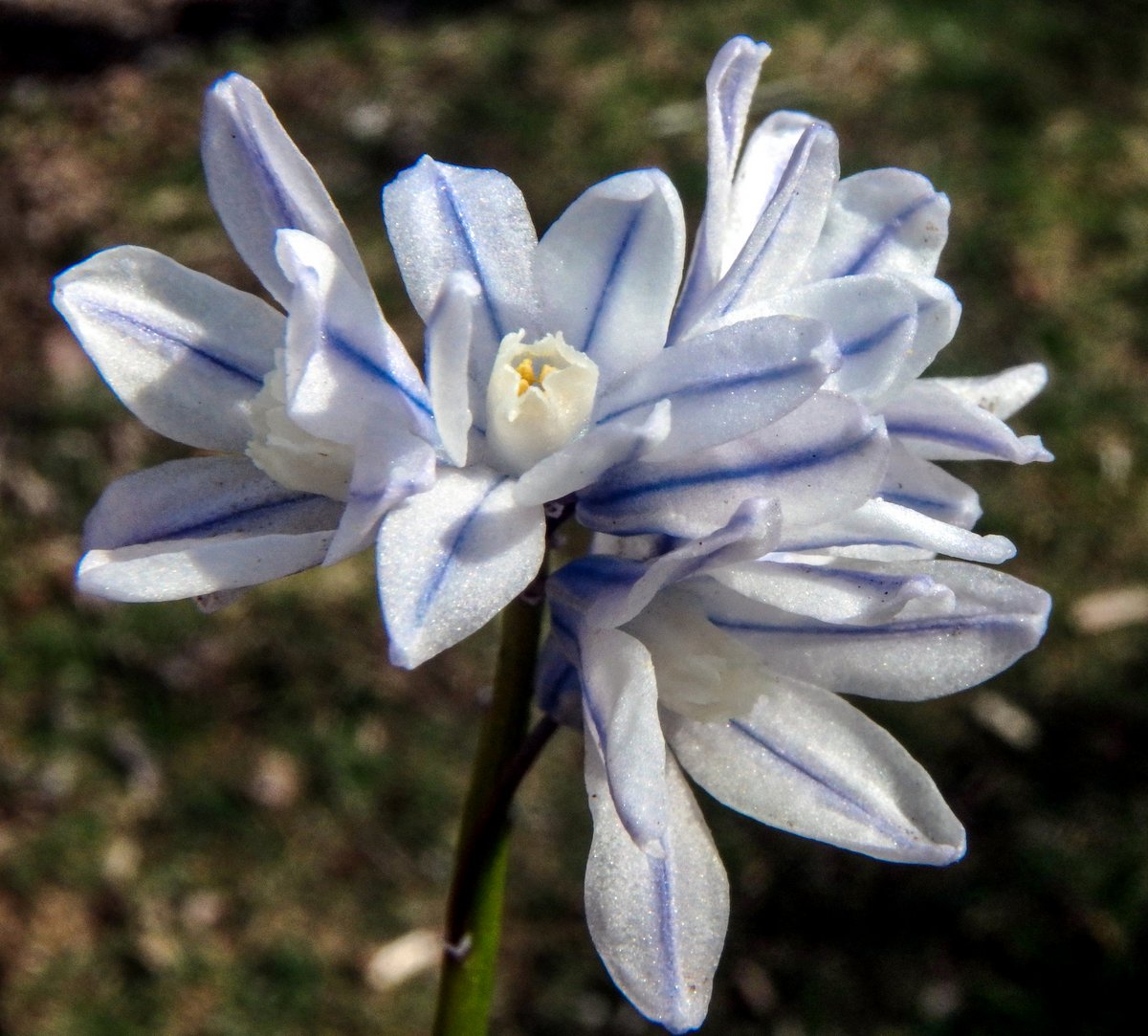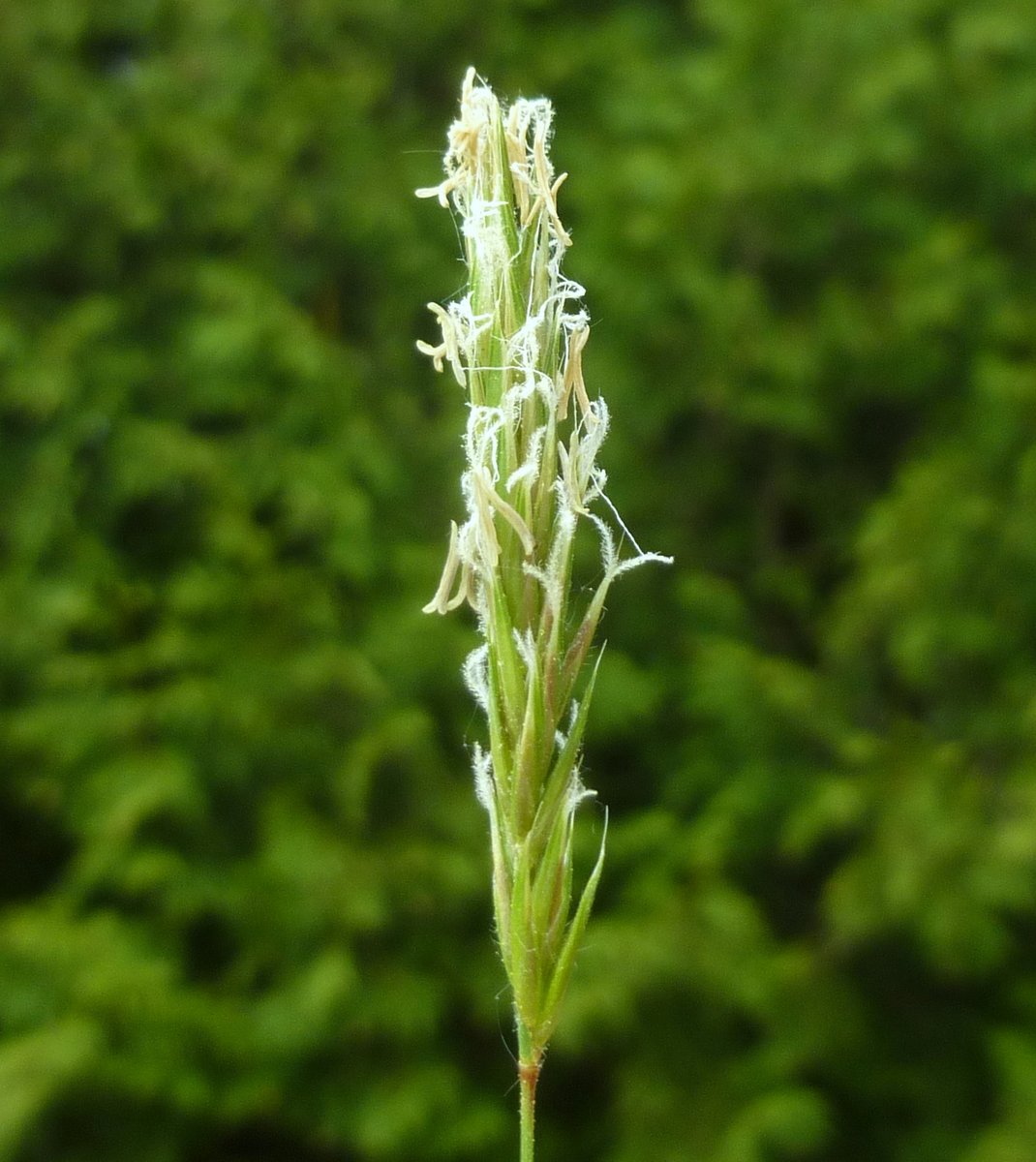
All of the sudden we have bloodroot flowers. They’ve appeared five days earlier than last year and last year’s post said that was the earliest I had ever seen them. That’s what four days of above average heat can do; everything is accelerated. I had a feeling I should go and see if they were blooming and it’s a good thing I did because these flowers don’t last long. On this day I found what seemed to be a very formal grouping for what are entirely native plants.

The flowers were as beautiful as ever. Quite often you find that yellow pollen has spilled onto the white petals but I didn’t see any of that going on so I’m guessing these blossoms must have just opened. Capturing the faint veins in the petals is tricky. Both the light and the camera’s settings have to agree, but it’s worth the effort I think, to show them as they are. The name “bloodroot” comes from the bright red sap in the plant’s roots.

Though I saw only one trout lily blossom it was about 2 weeks earlier than I’ve seen them before. I noticed that it had a friend over, most likely for a meal of pollen. The big yellow anthers seen here can be yellow, orange, or dark maroon. Nobody seems to know why they are different colors on different plants but I’ve always suspected that they changed color from yellow to maroon as they aged.

My favorite part of a trout lily is the maroon coloring on the backs of three of the tepals. Another name, dog tooth violet, comes from the shape and color of its roots. It is said that a colony of these plants can be hundreds of years old.

The trout lilies grow near where the spring beauties live. In just a week these small flowers have gone from a smattering of blossoms to many thousands of flowers carpeting the forest floor. One day a few years ago the thought that all of creation must rejoice when a flower blooms came into my mind, probably when I was in this place, and I realized just this spring that the thought must have come from the pleasure I feel when I find flowers in bloom. I do rejoice, and my thoughts become elevated; free from all but the beauty of life. It’s easy to imagine songs of joy, love, and exaltation ringing throughout the forest when I see something so beautiful. Reverence and gratitude come easy, especially in spring.

Violets have appeared suddenly, in large numbers. I’ve always thought of this favorite of mine as just a white violet but I think it’s a variant of the common blue violet. Violets can be hard to identify and I’m no longer interested enough in knowing the names of things to spend hours (or days) trying to find one. These violets seem to be more common each year. The more, the merrier.

Yellow violets are also blooming. Though they’re said to prefer rich woods I think these I found growing in a local park are round leaved violets. The round leaves never completely unfurl until the flowers are out and that’s a characteristic of the round leaved violet. I found one or two plants a few years ago but now there are several in this group. I hope they keep expanding in number because yellow violets are on the rare side here.

Female willow flowers are blooming and they look very different from male flowers in just about every way. If you don’t know what a bud scale is, it is that dark object on the left at the base of the flower stalk, and not too long ago all of what you see here fit into it as a willow catkin.
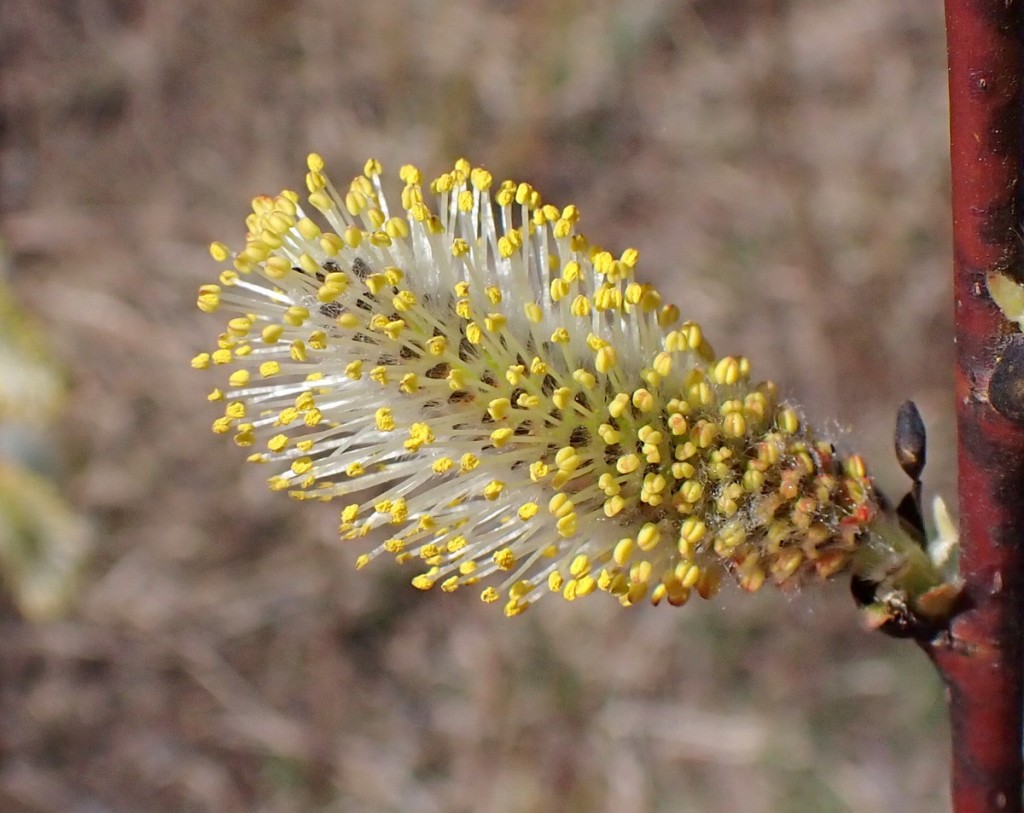
Here are some male willow flowers for comparison. If you go just by color the difference between male and female bushes can be seen by quite far off. Male flowers are much brighter yellow.

I looked at the male flower buds on box elders one day and saw no signs of flowers and then just three days later there were flowers everywhere, and that’s the way spring is going so far. Box elders are in the maple family and are considered a soft maple. They are also considered weed trees because they come up everywhere. I pulled one up that was growing in the foundation of my grandmother’s house and carried it home to my father’s house when I was probably 8 years old or so. I dug a hole and planted it and last I knew that tree was still there, still shading that house.

Female box elder flowers consist of lime green, sticky pistils. They’re very pretty things but they don’t last long. It’s unusual to find the female flowers further along than the male flowers but this year everything is a little off track. Usually, the male flowers appear and then the leaves and female flowers will appear a week or so later. This year the male flowers haven’t even produced any pollen yet but the female flowers are ready to go.
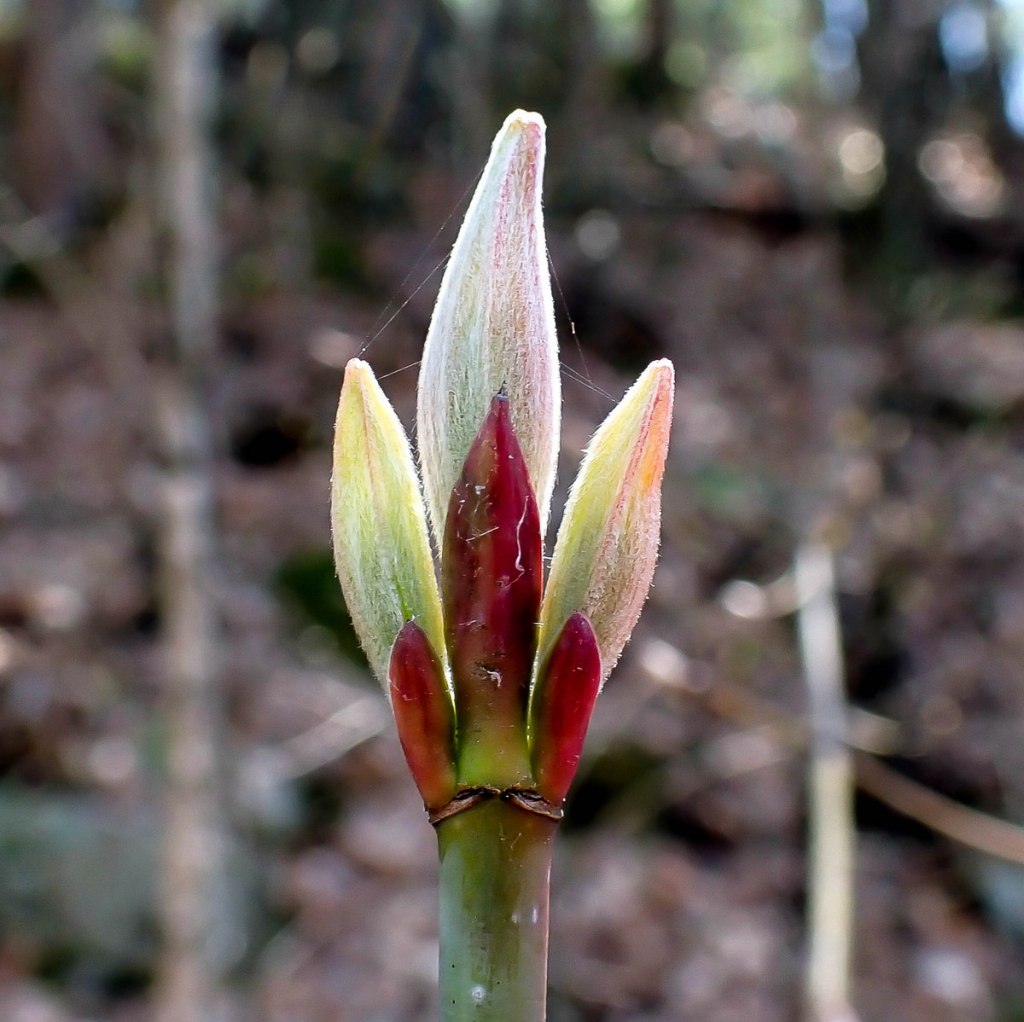
The colorful buds of striped maples have grown quickly and I almost missed seeing their beautiful colors this year. For a short time, they’re one of the most colorful things in the forest and a tree full of them looks like a tree full of tiny colored lights.

Striped maple buds are a good example of why, when a bud or flower catches your eye in the spring, you should watch it every day because changes come quickly. In a day or two your beautifully colored bud might have become leaves. That’s what happened this year to the ones I was watching but luckily bud break is staggered so it doesn’t happen on all trees at once.
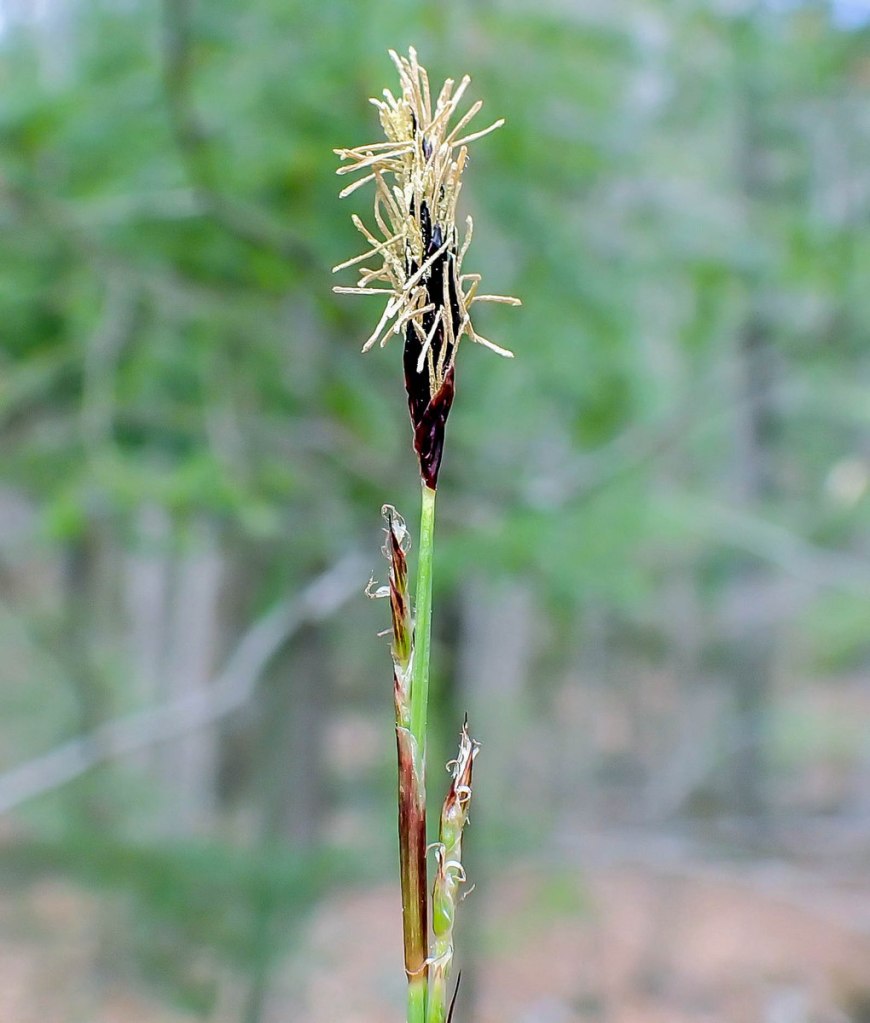
Last week I showed a plantain sedge about to bloom and this week they’re in full bloom. This is a flower that grows to about ankle level so most people walk right by them without seeing them, even though the woods are full of various sedges blooming at this time of year. The butter colored flowers at the top are male flowers and the wispy white bits lower down are the female flowers. They are wind pollinated and this is a good year for wind pollinated plants because we’ve had plenty of it.

The seeds (samaras) forming on the silver maples wear furry white coats for just a very short time before becoming a beautiful, vibrant red. I’d guess there must be many billions of seeds getting ready to let the wind take them to new places. They love to grow near rivers and wetlands.

Though many female trees have formed seeds the male maple flowers are still going off like fireworks in many of the trees. This staggered bloom time from tree to tree over a month or more is all about seeing to the continuation of the species. If we have a hard freeze not all of the flowers on all trees will die. It’s a plan that works well as long as we humans just let them be.

Lilacs really got ahead of me this year. It looks like they’ll bloom early.

Forsythias are blooming about a week early I think but from what I’ve seen most have just their lower flowers blooming. This is common with Forsythias because any buds that aren’t protected by snow will die off if it gets too cold. If we had two feet of snow depth you’ll see bushes everywhere you go with flowers blooming two feet off the ground and the rest of the bush with none at all. I have a feeling that the below zero cold we had in February must have done it but how this one in a local park and a few others I’ve seen escaped, I don’t know. It could be that evergreen tree cover protected them enough.

This magnificent magnolia lives at the same park as the Forsythia and it is also blooming about a week early.
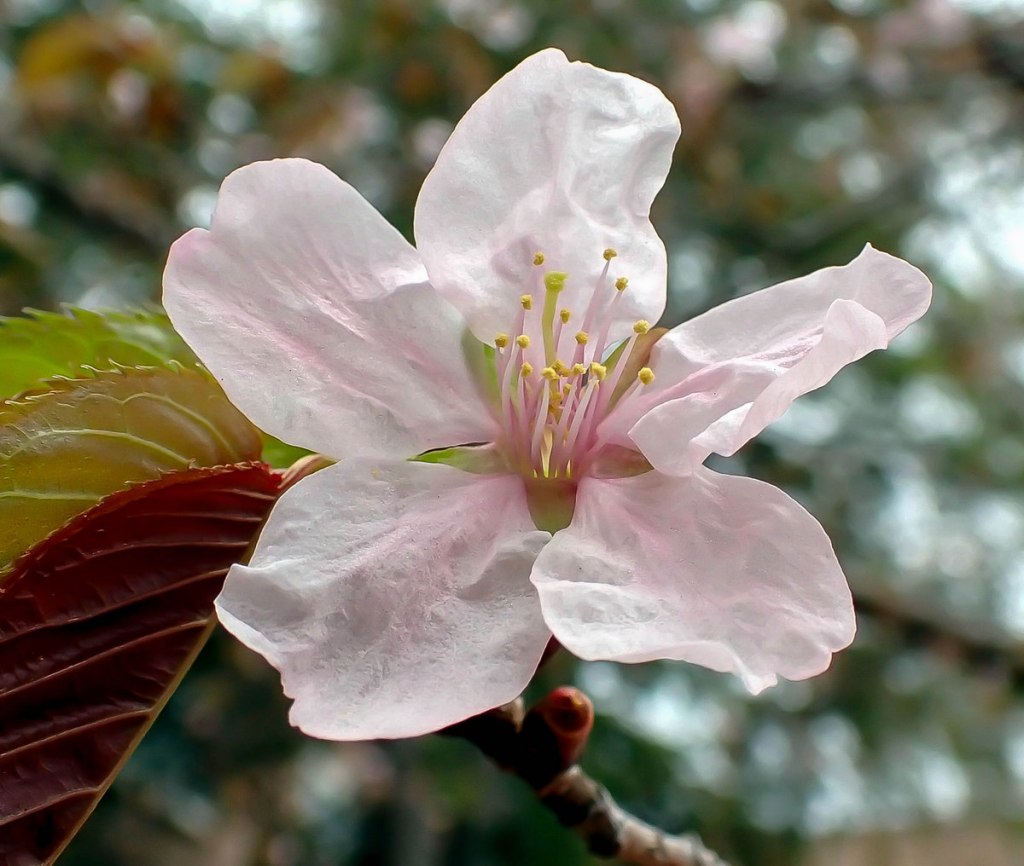
The wrinkly flowers of Tibetan cherries have appeared about a week early. They always remind me of someone who didn’t have time to iron their clothes. Cherry blossoms are very susceptible to frost so I’m hoping we won’t see frost until next fall. This cherry is also called the paper bark cherry because of the way its bark peels as it ages, much like a birch. It is used as an ornamental tree as much for its bark as for its flowers.

Years ago, when this country was young and people had next to nothing, they would trade plants from neighbor to neighbor, and one of those plants was vinca, also called myrtle. I often find it flourishing out in the woods as the patch in this photo does, without any tending at all. It’s usually near old cellar holes along with lilacs, orange daylilies, and peonies, all still blooming away as if they received daily loving care. They are the toughest of garden plants, of the plant it and forget it type.

One of my favorite spring flowering bulbs is the little scilla size striped squill. It’s a very beautiful thing and I’m determined to find some and grow them here. I find this one blooming in a local park each spring.

Japanese andromeda is an early spring flowering shrub but I think even they are earlier than usual this year. I’ve always liked the way the porcelain white flowers hang from golden bracts. If someone could make a chandelier or lamp out of these shapes done in porcelain or alabaster and gold leaf I think it would be a beautiful thing.

Speaking of beautiful things, this hellebore grows in a friend’s garden. Though hellebores are called “Lenten rose” this one missed lent and Easter too. But it was worth the wait. I think its easily the most beautiful hellebore blossom I’ve seen.
Those who find beauty in all of nature will find themselves at one with the secrets of life itself. ~L.W. Gilbert
Thanks for coming by.
Note: While I know that this post is already too long something just fell into my lap that I think should be shared. If you haven’t seen the newest photos of Jupiter by NASAs Juno Spacecraft just scroll down for a few photos of something miraculous.

This is Jupiter, the largest planet in out solar system, seen like it has never been before. The black spot on the left is a moon shadow.

The detail and colors in these photos are amazing, especially when you consider that Jupiter is 552.94 million miles from earth and we would never see them otherwise. How I’d love to swoop down over the (ammonia) cloud tops and see this in person. It looks like something peeled from the mind of a deranged artist but it is all very real.

It’s just amazingly beautiful, in my opinion. If you think so too and would like to see more just Google “Juno spacecraft photos of Jupiter.” I think there are close to 40 photos in all. I hope you enjoyed seeing these few and I hope I this post hasn’t eaten up too much of your day.



